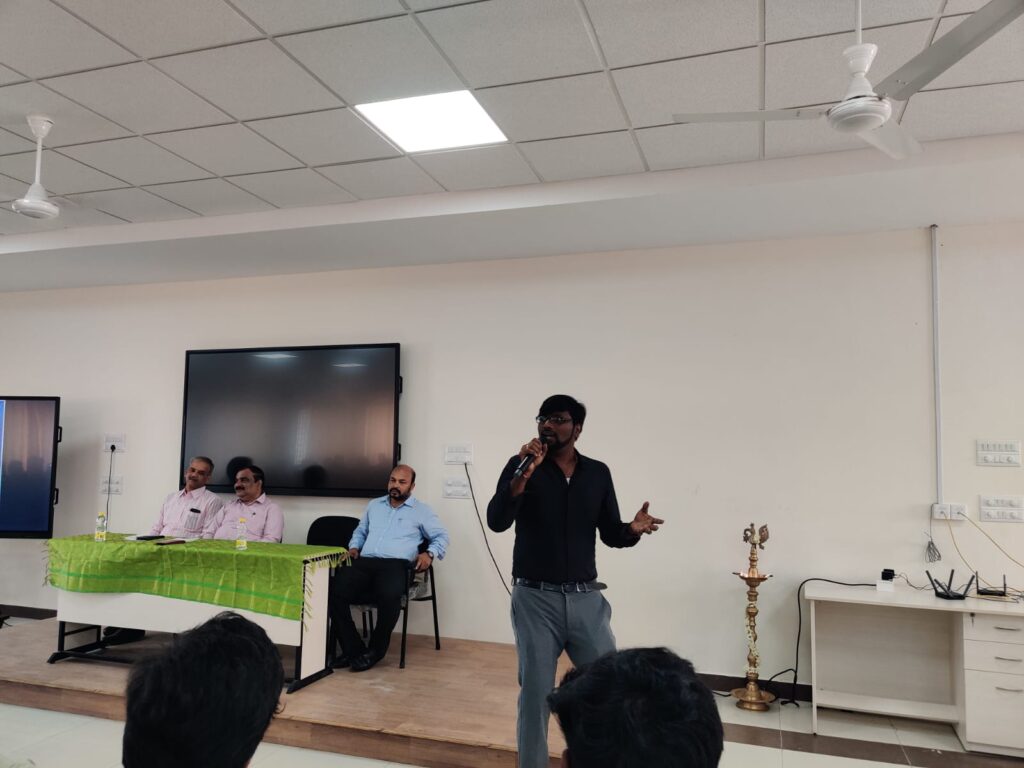Python Q & A
What is Python? Python is a simple and beginner-friendly programming language. It was created by Guido Van Rossum in 1991 and is widely used for web development, data science, automation, and more. Why is Python called an interpreted language? Python executes code line by line using an interpreter, meaning it doesn’t require the entire program to be compiled into machine code before running. This makes testing and debugging faster. What is PEP 8? PEP 8 is a style guide for writing Python code. It ensures code is clean, consistent, and easy to read. Following PEP 8 helps in better collaboration and understanding among developers. What are mutable and immutable data types? ● Mutable: These can be changed after creation. Example: Lists and Dictionaries (you can add, remove, or update their elements). ● Immutable: These cannot be changed after creation. Example: Strings and Tuples (once created, their values cannot be altered). What is list comprehension? List comprehension is a compact way to create new lists. It allows you to write a loop in a single line, making code shorter and more readable. Example: squares = [x**2 for x in range(5)] # [0, 1, 4, 9, 16] What is the difference between a Set and a Dictionary? ● Set: Unordered collection of unique elements. Example: {1, 2, 3}. ● Dictionary: Stores data in key-value pairs. Example: {‘a’: 1, ‘b’: 2}. What is a lambda function? A lambda function is a small, anonymous function that you can de ne in one line. It is used for simple tasks. Example: add = lambda x, y: x + y print(add(2, 3)) # Output: 5 What does pass mean in Python? The pass statement is used as a placeholder when no action is required. It prevents errors in situations where a block of code is required but is not ready yet. Example: if True: pass # No action is taken What are global and local variables? ● Global Variables: Declared outside any function and accessible throughout the program. ● Local Variables: Declared inside a function and only accessible within that function. What is negative indexing? Negative indexing allows you to access elements of a list or string starting from the end. Example: lst = [10, 20, 30] print(lst[-1]) # Output: 30 (last element) What is slicing in Python? Slicing is a way to extract parts of a sequence (like lists or strings) using indices. Example: text = “Python” print(text[1:4]) # Output: yth What is PIP? PIP stands for “Python Installer Package.” It is a tool used to install Python libraries and packages. Example : pip install numpy What are *args and kwargs? *args: Used to pass a variable number of positional arguments to a function. Example: def add(*args): return sum(args) print(add(1, 2, 3)) # Output: 6 **kwargs: Used to pass variable keyword arguments (key-value pairs). Example: def greet(**kwargs): for key, value in kwargs.items(): print(f”{key}: {value}”) greet(name=”Alice”, age=25) # Output: name: Alice, age: 25 What is a class? A class is like a blueprint that denes how objects should behave. It contains attributes (data) and methods (functions). Example: class Car: def __init__(self, brand): self.brand = brand What is an object? An object is an instance of a class. It is created based on the class and represents speci c data and behavior. Example: car1 = Car(“Toyota”) # car1 is an object of the Car class What is encapsulation? Encapsulation is the process of wrapping data (attributes) and methods into a single unit (class) and restricting access to sensitive data using access modi ers like private or protected. What is inheritance? Inheritance allows a class (child class) to use properties and methods of another class (parent class). It helps in reusing code. Example: class Vehicle: def start(self): print(“Starting…”) class Car(Vehicle): Pass car = Car() car.start() # Output: Starting… What is polymorphism? Polymorphism means the same function behaves differently based on the context. Example: class Animal: def sound(self): Pass class Dog(Animal): def sound(self): print(“Bark”) class Cat(Animal): def sound(self): print(“Meow”) dog = Dog() dog.sound() # Output: Bark What is abstraction? Abstraction hides unnecessary details and shows only the essential features of an object. It is implemented using abstract classes or interfaces. What are namespaces? Namespaces are containers that hold a mapping between names and objects. They help avoid name con icts. Example: x = 10 # Global namespace def my_func(): x = 5 # Local namespace What is the difference between is and ==? ● is: Checks if two variables refer to the same object in memory. ● ==: Checks if two variables have the same value. Example: a = [1, 2] b = [1, 2] print(a == b) # True (values are the same) print(a is b) # False (different memory locations) What is a docstring? A docstring is a special string written as the rst statement in a function, class, or module to describe what it does. Example: def greet(): “””This function prints a greeting message.””” print(“Hello!”) What are the types of operators in Python? ● Arithmetic Operators: +, -, *, /. ● Comparison Operators: ==, !=, . ● Logical Operators: and, or, not. ● Assignment Operators: =, +=, -=. ● Bitwise Operators: &, |, ~. ● Identity Operators: is, is not. ● Membership Operators: in, not in. What is method overriding? Method overriding occurs when a child class rede nes a method from its parent class with its own implementation. Example: class Parent: def greet(self): print(“Hello from Parent”) class Child(Parent): def greet(self): print(“Hello from Child”) child = Child() child.greet() # Output: Hello from Child What is the difference between append() and extend()? append(): Adds one element (e.g., number, string, or list) to the end of a list. Example: lst = [1, 2] lst.append(3) # Result: [1, 2, 3] lst.append([4, 5]) # Result: [1, 2, 3, [4, 5]] extend(): Adds elements of an iterable (like another list) to the list. Example: lst = [1, 2] lst.extend([3, 4]) # Result: [1, 2, 3, 4] What are Python libraries? Name a few. Libraries are pre-written code collections that simplify











